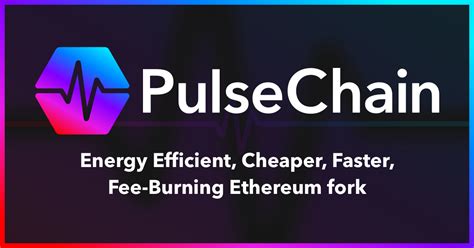Overview of the Pulse Ecosystem.
The Components Of The Pulse Ecosystem.
Richard Heart’s Pulse Ecosystem has the potential to revolutionize the cryptocurrency and financial industries through its innovative approach to fixing issues in the traditional financial system and creating the best performing asset in history. At the heart of the Pulse Ecosystem is the PulseChain hard fork of Ethereum, which offers lower gas fees, higher throughput, and deflationary token economics.
The Pulse Ecosystem is also supported by a strong, supportive community focused on financial education and helping others succeed, as exemplified by the PulseChain airdrop, which allows eligible users to receive airdropped tokens simply by holding ERC-20 tokens or NFTs on the Ethereum blockchain or by “sacrificing” coins or donating to the SENS Foundation.
Another key element of the Pulse Ecosystem is HEX, a cryptocurrency token developed by Richard Heart that aims to be a decentralized, transparent, and fair alternative to traditional finance. With these and other unique features, the Pulse Ecosystem is poised to make a major impact on the cryptocurrency and financial industries.
In addition to its 1:1 copies of Ethereum tokens, PulseChain has several key features that set it apart from Ethereum. These include lower gas fees, higher throughput, and deflationary token economics.
Lower gas fees:
One of the main issues with Ethereum is the high cost of gas fees, which can be prohibitively expensive for some users. PulseChain addresses this issue by offering lower gas fees, which will make it more accessible and affordable for users to make transactions on the network.
Higher throughput:
PulseChain also has a higher throughput than Ethereum, with 4x faster transaction speeds and 3 second block times compared to Ethereum’s ~13 seconds. This means that PulseChain can handle more transactions per second and provide a faster and more efficient experience for users.
Deflationary token economics:
Unlike Ethereum’s native token, Ether (ETH), PulseChain’s native token, Pulse (PLS), is deflationary. This means that 25% of each transaction’s fees are burned to reduce the circulating supply of PLS. This increases the rarity and value of PLS, making it a more attractive investment for users.
PulseX Decentralized Exchange (DEX).

Pulsex is a decentralized exchange (DEX) built on the PulseChain hard fork of the Ethereum blockchain. It is designed to be a key component of the Pulse Ecosystem and aims to be the most liquid DEX on PulseChain. Pulsex allows users to trade PRC20 tokens, which are similar to ERC20 tokens but reside on the PulseChain blockchain. This means that users can trade a variety of digital assets on the Pulsex DEX, including tokens that have been issued on the PulseChain blockchain.
Overview Conclusion.
Overall, the Pulse Ecosystem offers a unique and innovative solution to the issues faced by traditional financial systems. Its hard fork of Ethereum, PulseChain, has several key features that make it an attractive choice for users, including lower gas fees, higher throughput, and deflationary token economics.

